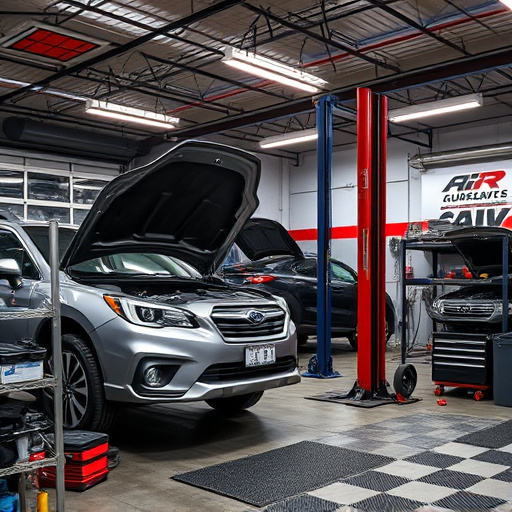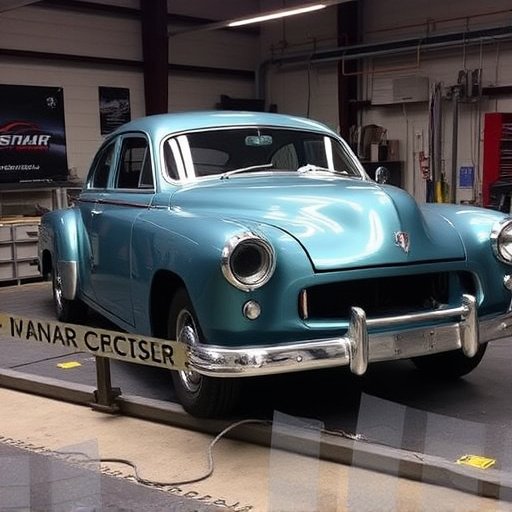A brake system collision check is crucial after accidents, meticulously examining braking components for safety using specialized tools and expertise to identify subtle issues. Modern diagnostic tools like OBD-II scanners and software help pinpoint sensor malfunctions and performance anomalies. Effective case management strategies, including documentation and prioritization, ensure efficient handling of complex cases, with regular reviews enhancing overall efficiency in managing brake system collision checks.
In today’s advanced automotive landscape, effectively managing complex brake system collision check cases is paramount for safety. This comprehensive guide delves into the intricate world of brake system collision checks, providing valuable insights on diagnostic tools and technologies. We explore effective case management strategies to ensure accurate assessments and swift resolutions, empowering professionals to navigate these challenging scenarios efficiently. Understanding these techniques is crucial for maintaining optimal vehicle performance and passenger safety.
- Understanding Brake System Collision Checks
- Diagnostic Tools and Technologies
- Effective Case Management Strategies
Understanding Brake System Collision Checks

A brake system collision check is a critical process that involves thoroughly inspecting and evaluating the condition of a vehicle’s braking components after a collision or accident. This check ensures the safety and reliability of the brake system, which is paramount for preventing future accidents and ensuring the well-being of drivers and passengers. When a vehicle experiences a collision, even if it appears minor, the impact can cause internal damage to the brake lines, calipers, pads, and other vital parts.
The complexity arises from the intricate interplay of various brake system components and their potential for misalignment or malfunction due to shock absorption and metal deformations during a crash. A comprehensive collision check involves specialized diagnostic tools and expertise to identify subtle issues that might go unnoticed in routine maintenance. This process is crucial, especially when considering that efficient braking is essential for effective vehicle control, and any compromised parts can have severe consequences on the road. For detailed assessments and reliable repairs, many owners opt for professional services from a trusted car body shop offering specialized brake system repair and body shop services.
Diagnostic Tools and Technologies

Modern diagnostic tools and technologies play a pivotal role in managing complex brake system collision check cases. Advanced scanning devices equipped with OBD-II (On-Board Diagnostics) capabilities can quickly identify sensor malfunctions, performance anomalies, and potential issues within the intricate network of the brake system. These tools provide precise data on brake fluid levels, pressure readings, and even individual component health, enabling mechanics to pinpoint problems accurately.
Furthermore, specialized software applications designed for collision repair shops facilitate comprehensive analysis of vehicle damage, including frame straightening requirements. By integrating 3D imaging and laser scanning technologies, these programs offer detailed measurements and visualizations, ensuring accurate assessments of both external and internal repairs, such as autobody repairs. This level of precision not only streamlines the diagnostic process but also guarantees the safety and effectiveness of subsequent brake system repairs.
Effective Case Management Strategies

Effective case management strategies are essential for handling complex brake system collision check cases efficiently. The first step involves thorough documentation and record-keeping. Every detail related to the incident, from the initial report to post-repair test results, should be meticulously documented. This not only ensures accuracy but also serves as a valuable reference during future inspections or repairs. Organising these records in a structured manner enables quick access, facilitating informed decision-making processes.
Additionally, implementing a prioritisation system for case handling is crucial. Given the intricate nature of brake systems, assigning cases based on urgency and complexity can significantly streamline operations. Vehicle repair services providers should allocate resources accordingly, ensuring that critical repairs are addressed promptly while maintaining the integrity of each car restoration process. Regular reviews and updates to these strategies can further enhance overall efficiency in managing such cases.
Managing complex brake system collision check cases requires a multi-faceted approach. By understanding the intricacies of these checks, leveraging advanced diagnostic tools, and implementing efficient case management strategies, automotive professionals can ensure safe vehicle operations and enhance customer satisfaction. These methods form the cornerstone of effective collision repair, promoting both reliability and roadworthiness.














